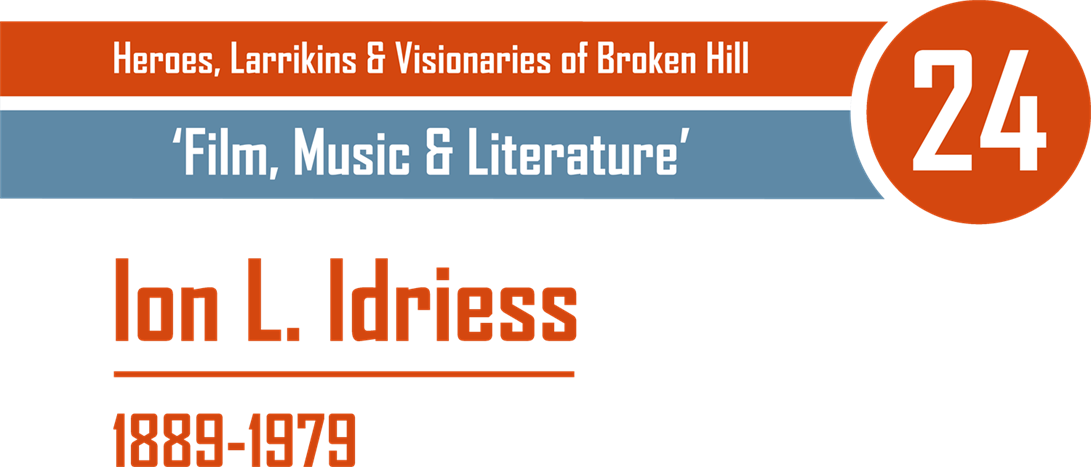Ion L Idriess

Ion Llewellyn Idriess could write a book in two months and, more than once, published three books in a year. His contribution to Australian publishing was epic and far reaching, and his own childhood memories contributed to The Silver City, one of the best-loved histories of Broken Hill and surrounds.
Ion Idriess was the son of Walter Owen, the Sheriff at the Broken Hill Gaol, and Juliette Idriess a member of the District Nurses' Association. Walter presided over the city’s only execution in 1907 and, in 1908 Juliette, died from typhoid fever after nursing seventeen year-old Ion through the same disease. She is buried in the Broken Hill cemetery.
With wander-lust in his blood, Ion set off again after school to become an itinerant worker in NSW. He found employment as dingo shooter, rabbit poisoner, shearer, boundary rider, drover, sandalwood harvester and opal miner. His first published piece, in The Bulletin in 1910, was about opal mining at Lightening Ridge in NSW.
When war came in 1914 Ion Idriess enlisted, fought in Palestine, Sinai and Turkey, and was wounded in Gallipoli. After the war he traveled to Cape York in the remote north of Queensland, from where he traveled to the Northern Territory and Western and Central Australia. Over this period he added gold prospecting and buffalo shooting to his list of qualifications and spent months traveling with the Aboriginal people of the Cape York region. He later wrote of what he had observed and experienced.
Ion Idriess settled in Sydney in 1928, married in 1932, and became a freelance writer. He was a natural storyteller with an eye for detail and an ear for the spoken language of the outback. He believed in and was optimistic about the future of Australia, as well as having a fascination with its past. His voice was a combination of the heroic and romantic interlaced with historical and social themes, and it resonated strongly with his readers: he sold more than three million books when the country had a population of only seven million people. He described himself writing ‘like stinking hell’, which he must have done to publish forty-seven books in his lifetime, including the bestselling biographies Flynn of the Inland on John Flynn, founder of the Royal Flying Doctor Service, and The Cattle King: the story of Sir Sidney Kidman.
Ion Llewellen Idriess was hugely influential in the resurgence of Australian publishing between the 1940s-1960s. His natural writing voice was also immediate and unaffected, reflecting Australian culture and connecting with Australian readers. The writing style he established influenced a new generation of authors. He was awarded an OBE in 1968.
Audio transcript available.
PICK UP YOUR FREE BROCHURE & MAP OF THIS TRAIL FROM THE VISITOR INFORMATION CENTRE